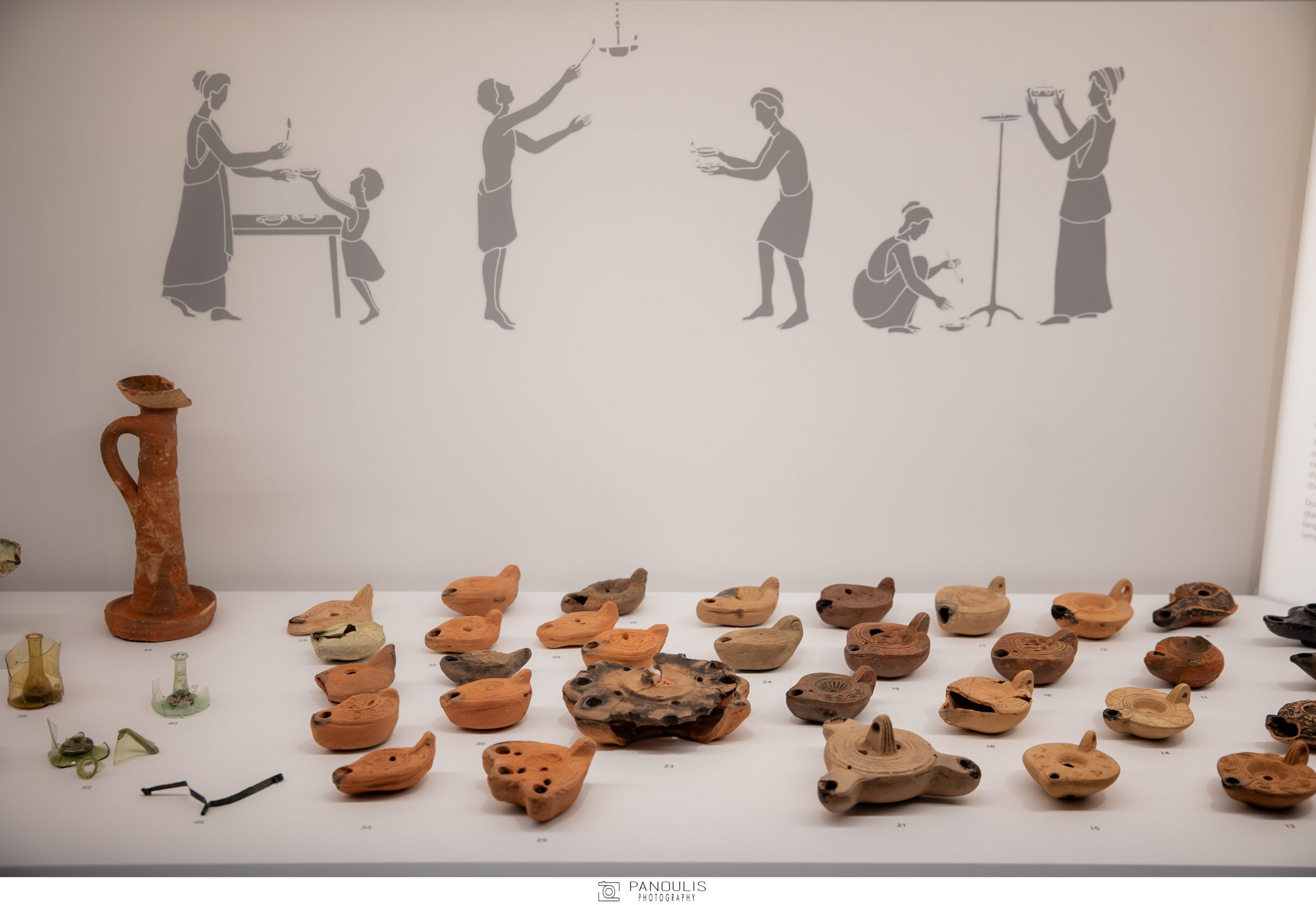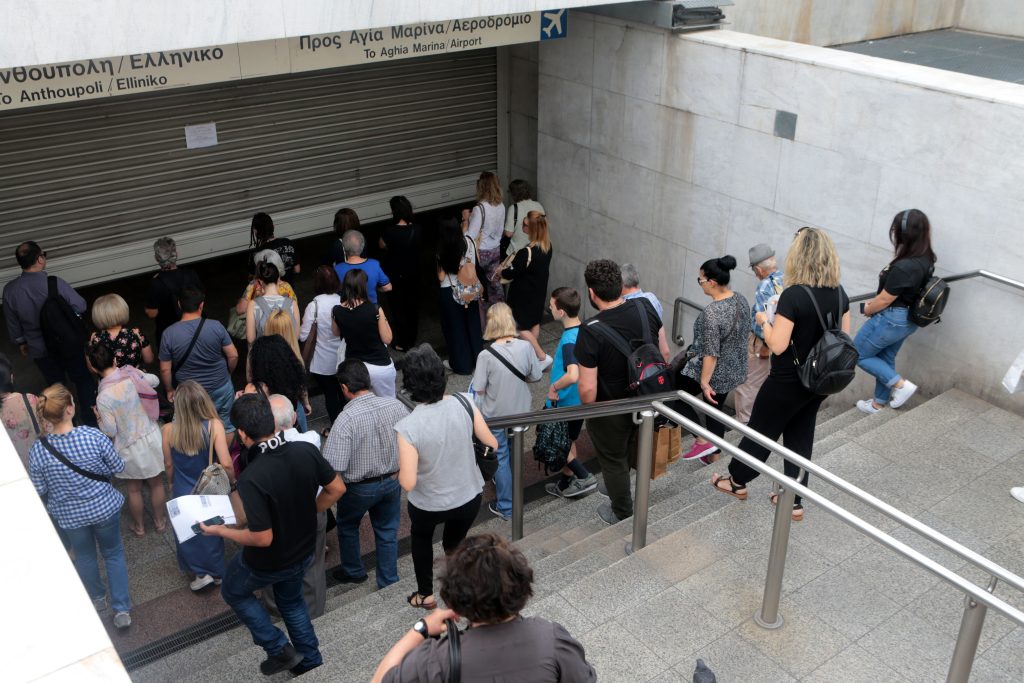Digging through strata to shed light on the past four and a half millennia is the stunning result of excavations under the Acropolis Museum in central Athens. A new “museum under the museum”, in fact, is called just that: Excavation Museum. The finds have significantly increased archaeologists’ understanding of the southern slope of the Acropolis, a site with a rich history, which ancient historian Thucydides describes as one of Athens’ oldest districts.
Lamps and children’s toys, clay jugs and beehives, pieces of broken pottery (ostraca) used to vote in trials and to decide whether someone should be ostracized or not, have been uncovered. The ostraca on display bear the name of the Alcmaeonids, a powerful clan whose members included Cleisthenes, Pericles and Alcibiades.
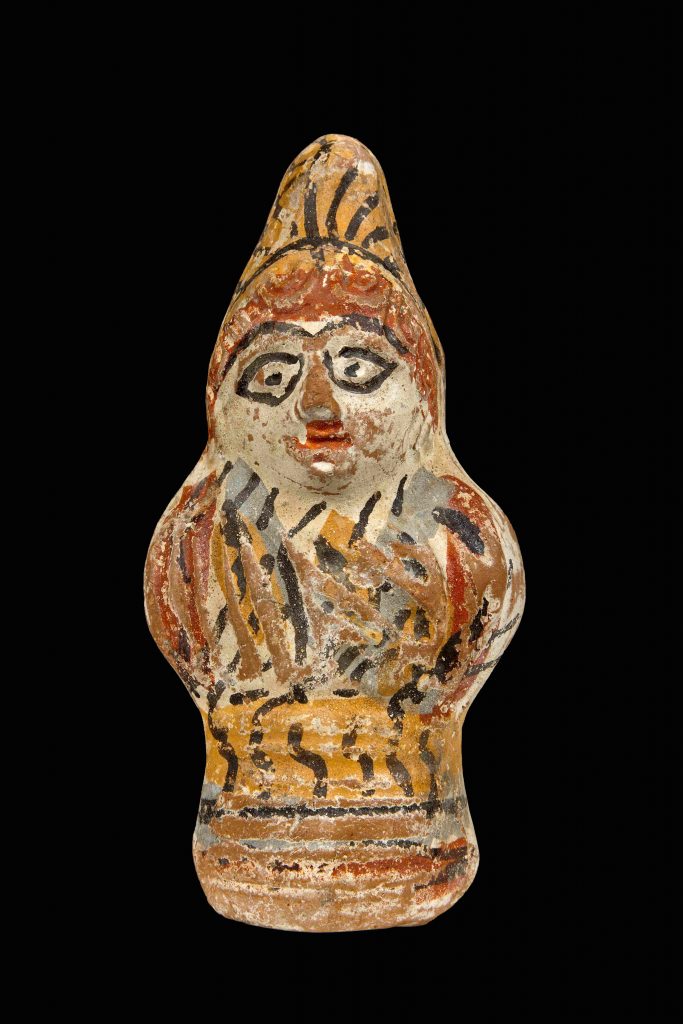
Clay children’s rattle 3rd-4th century AD
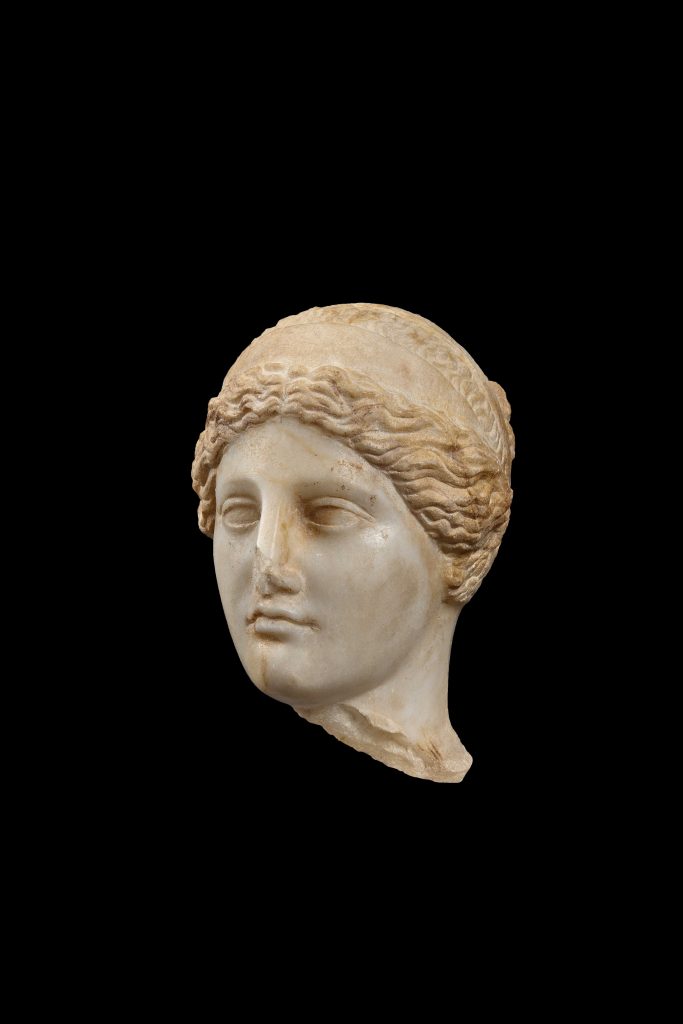
Marble head of a statue of the goddess Hygieia 1st-2nd century AD
Other finds include beads, amulets and large metal pins – like the one that mythical Oedipus used to blind himself – used to fasten the clothes of the dead, or perhaps their shrouds.
Around 1,150 artifacts, selected from the thousands discovered during the digs in the “bowels” beneath the Acropolis Museum, have been selected for display. These are objects created by craftsmen and artisans out of marble and clay, glass and metal, bone or shell, but last touched – in some cases – by Athenians who lived in the city’s Democratic heyday.
It’s those objects – some humble and routine, others more refined and rare – that complete the picture of the ancient neighborhood brought to light beneath the museum and now opened to visitors.
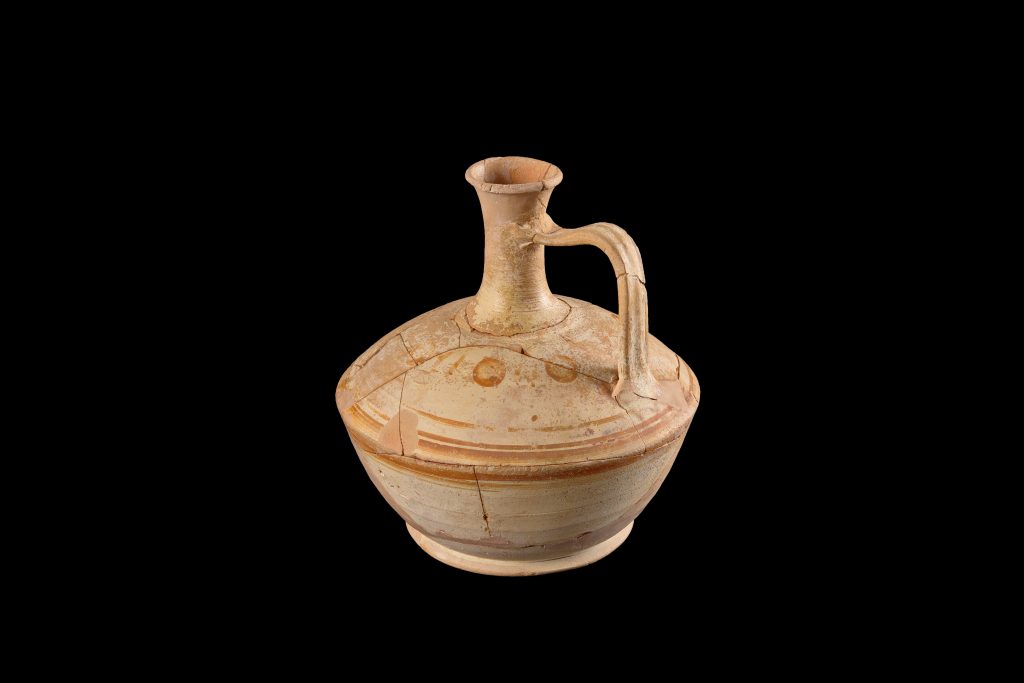
“A complex palimpsest of uses and buildings, extremely interesting from a historical and archaeological point of view and representative of the life of the city’s poor, but also its social and intellectual elite, through successive eras,” as Greek Culture Minister Lina Mendoni said at the opening ceremony last week, in the presence of President of the Republic Katerina Sakellaropoulou.
These artifacts constitute a new “museum under the museum”, enriching the country’s leading institution, in terms of visitor numbers, with an exhibition made possible by the support of the Bank of Greece (BoG) to mark the 15-year anniversary of the Acropolis Museum’s opening, and five years since the excavation site was made accessible.
“Greece and the Acropolis Museum now have yet another argument in favor of the repatriation of the Parthenon Sculptures,” the Director-General of the Acropolis Museum, Nikos Stampolidis, said, noting the importance of the experiential approach taken in displaying the exhibits.
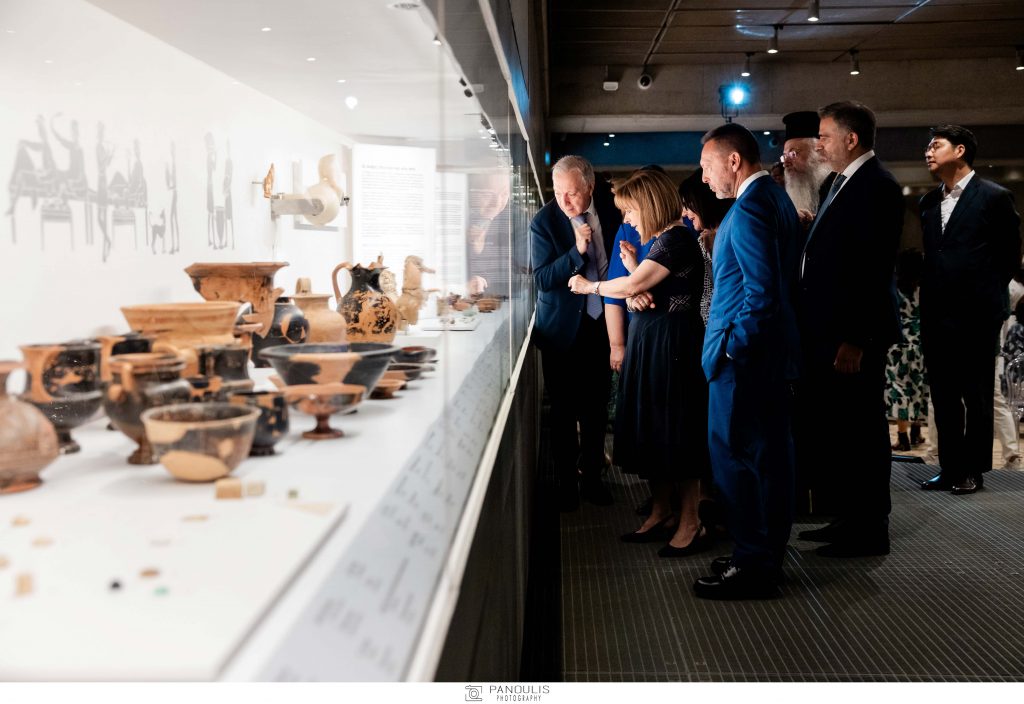
Photographs from the inauguration of the Excavation Museum in the presence of President of Greece Katerina Sakellaropoulou, BoG Governor Yannis Stournaras, Culture and Sports Minister Lina Mendoni and General Director of the Acropolis Museum Prof. Nikolaos Chr. Stampolidis.
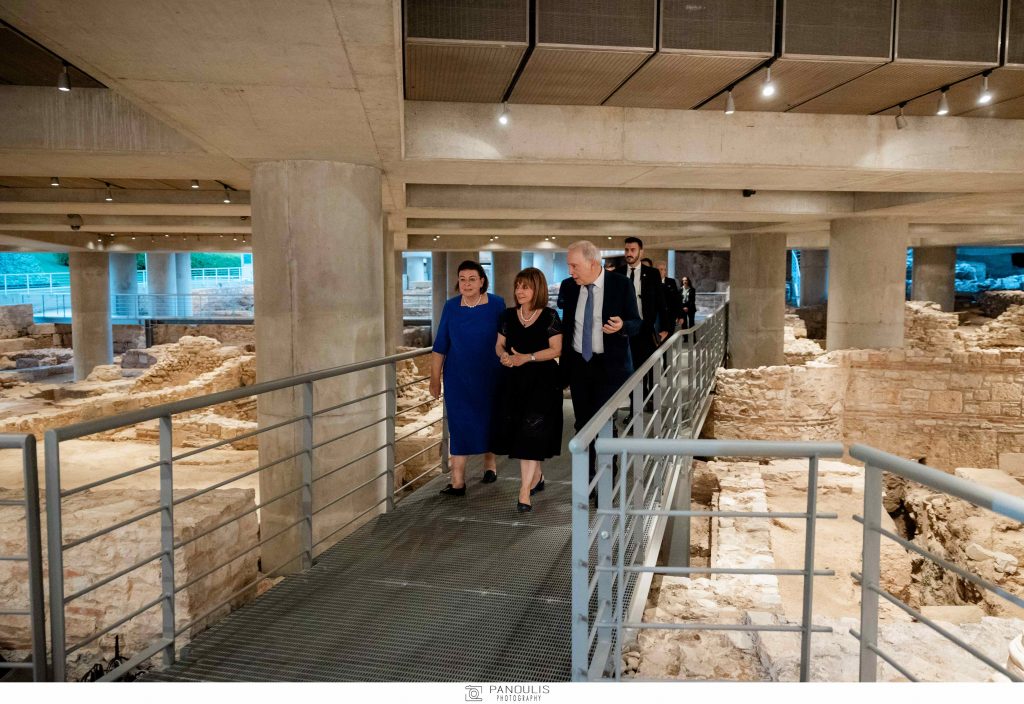
Active shadows
The 34-meter display area hosts artifacts that shed light on life in the area from the 3rd millennium BC through the next 4,500 years, positioned in such a way by the museum’s conservators (headed by Costas Vasiliadis) that their support structures are almost invisible. The human presence, and how the objects were used, is conveyed by the active shadows that “live on” through the use of a back panel in the display area, as the museum’s director of collections and exhibitions, Stamatia Eleftheratou, adds.
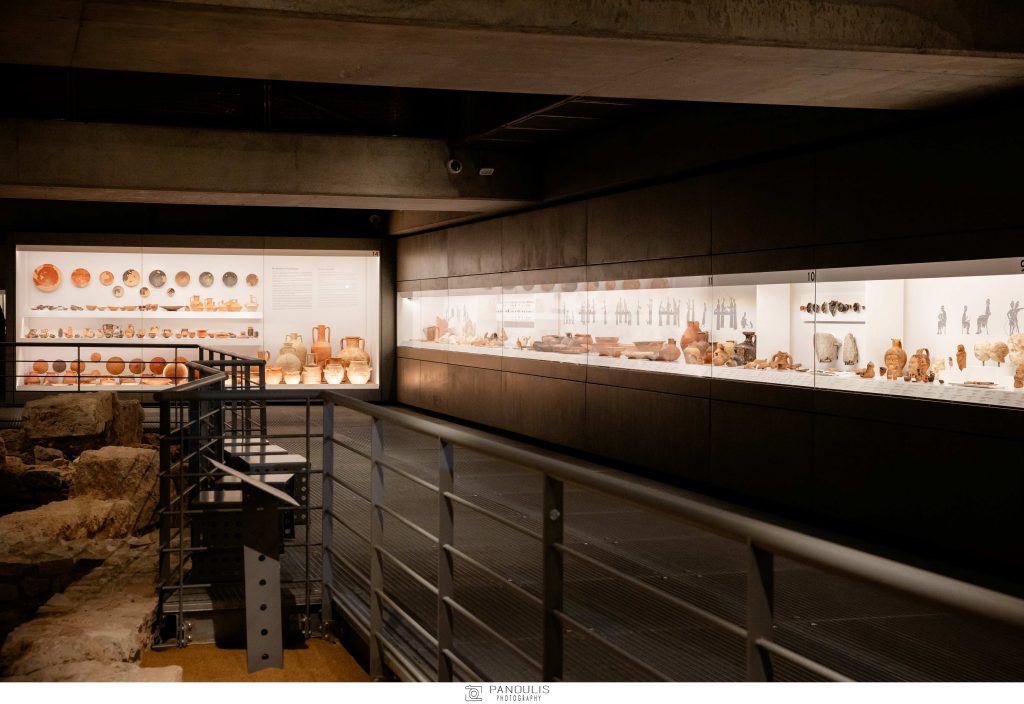
And if the jug with the anti-spill rim for wine, the small cups for spirits, the metal vessel that still has traces within of Lemnian Earth (used medicinally in antiquity), the bronze scoop/censer, a relief depicting an ear suggesting that the eastern gods Sarapis or Isis will answer the faithful’s prayers, and the only portrait in which Aristotle still has his nose, stand out among the exhibits, then the workaday objects on display make an equally fascinating impression.
This autumn, images of the 1,150 artifacts will be uploaded along with detailed captions on the museum’s website. This will be followed by the debut of a guided tour, which will be available through an app in more 25 languages.
